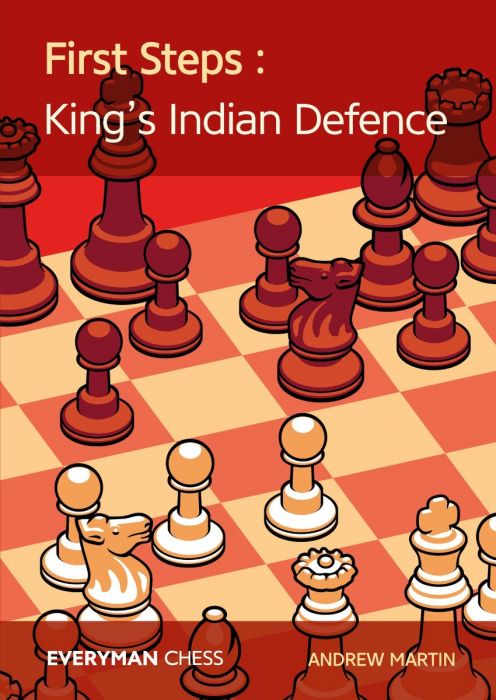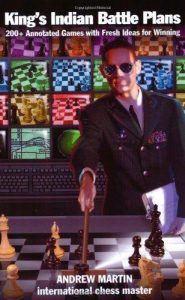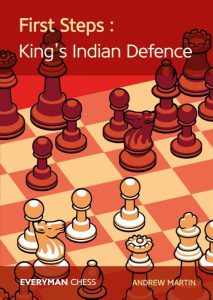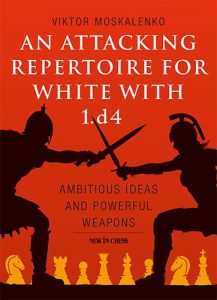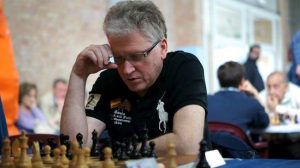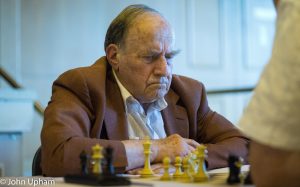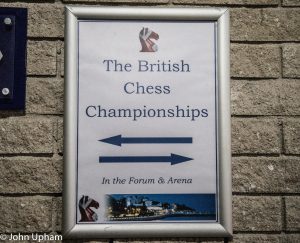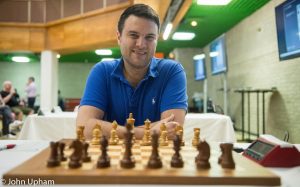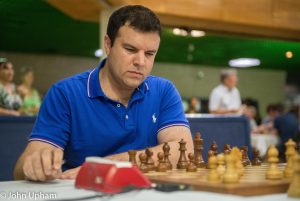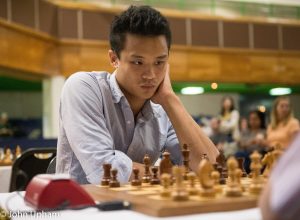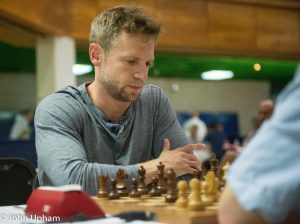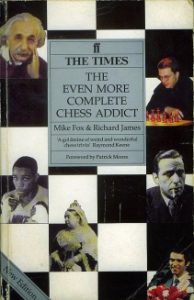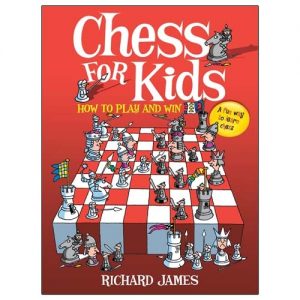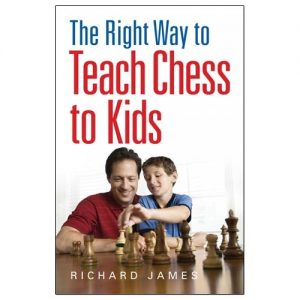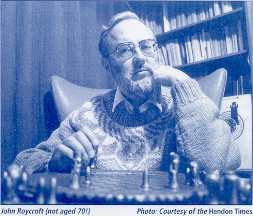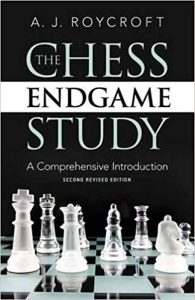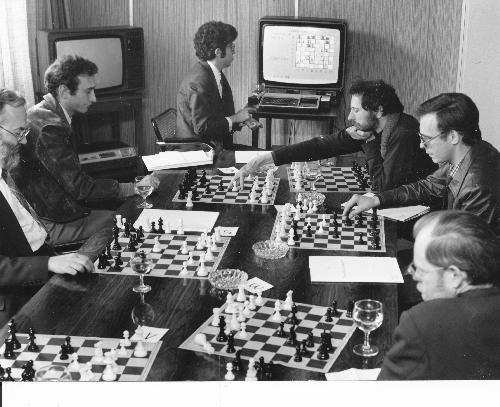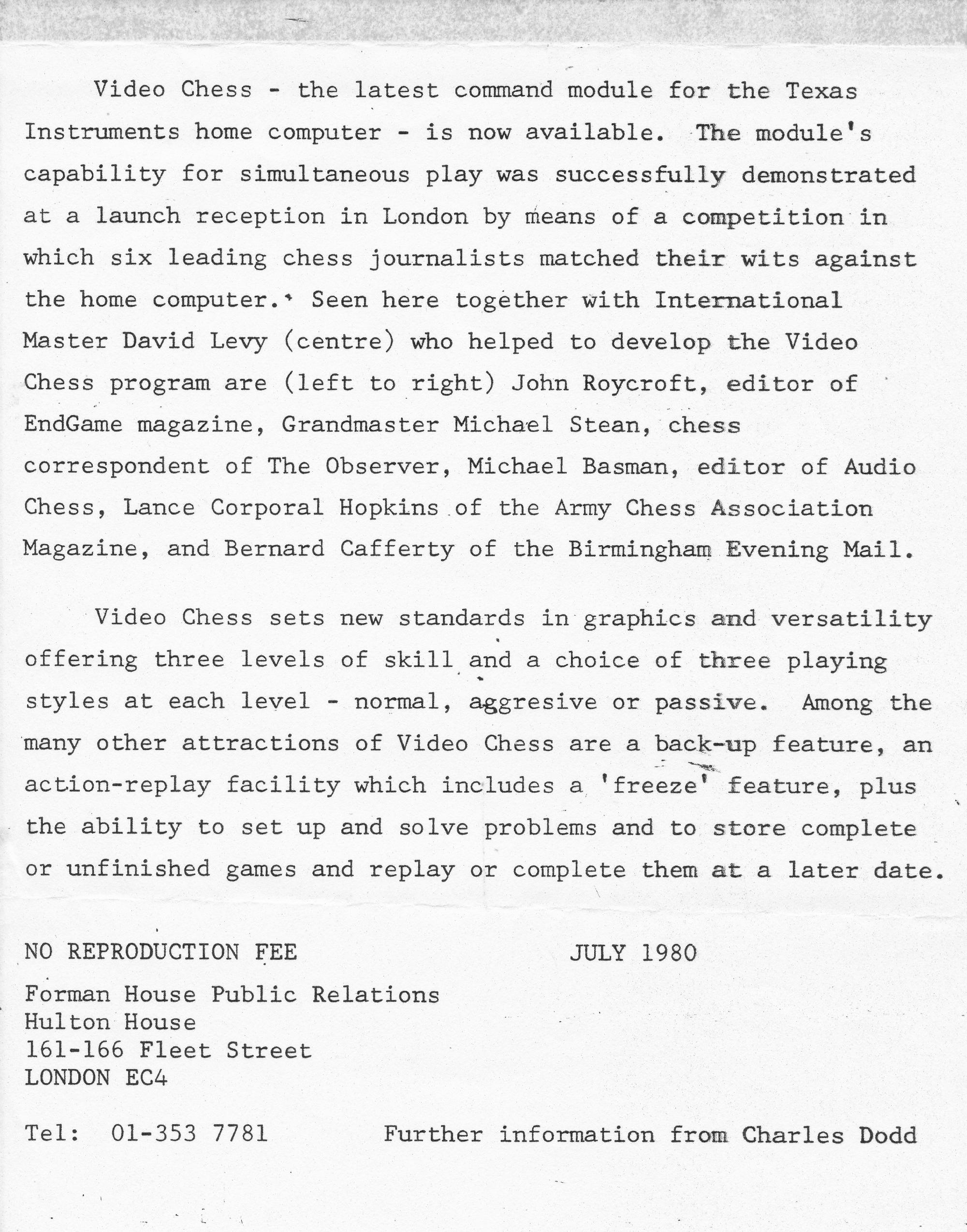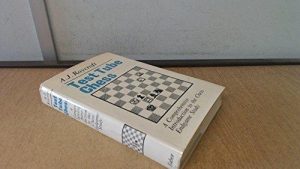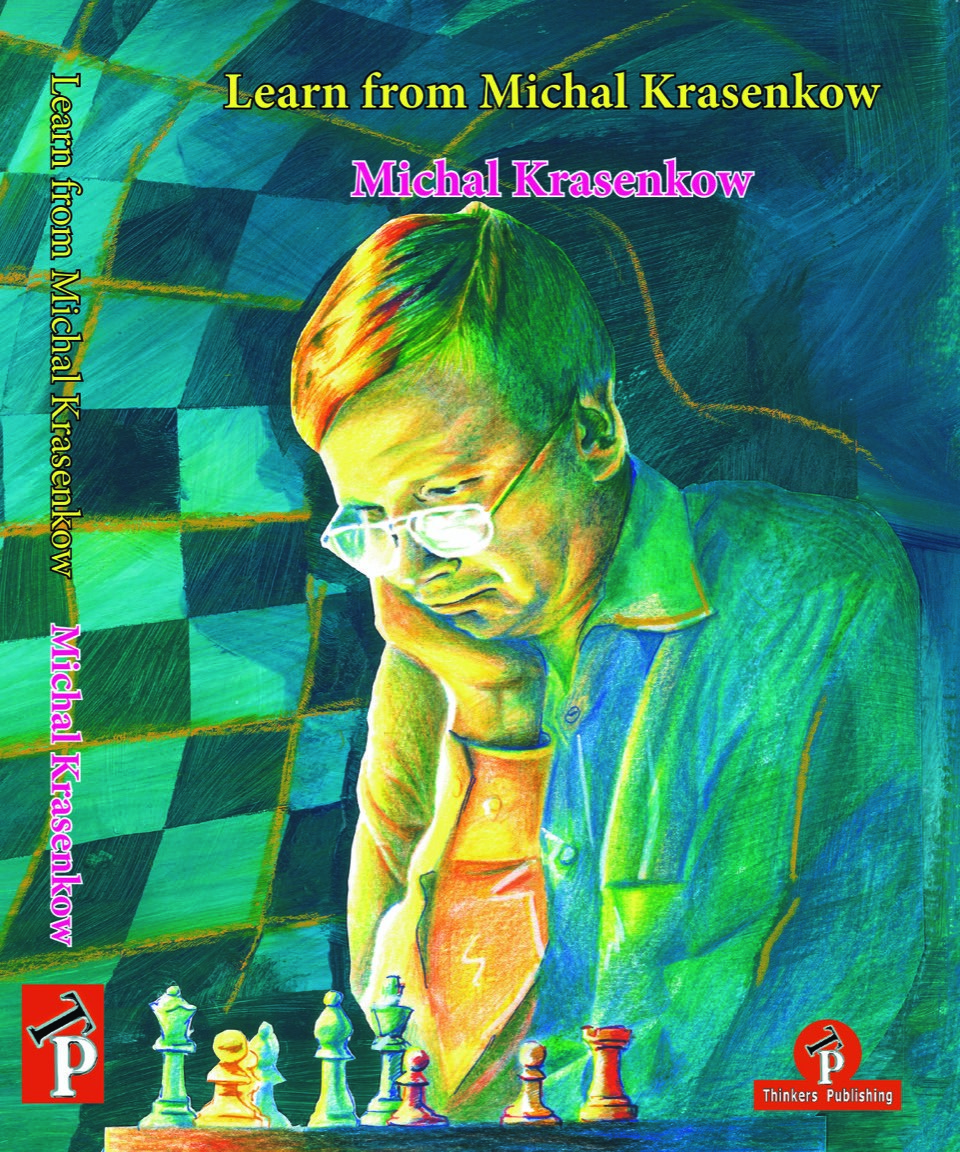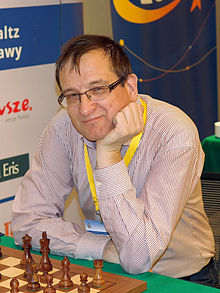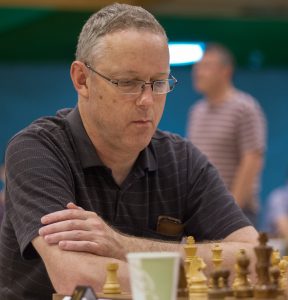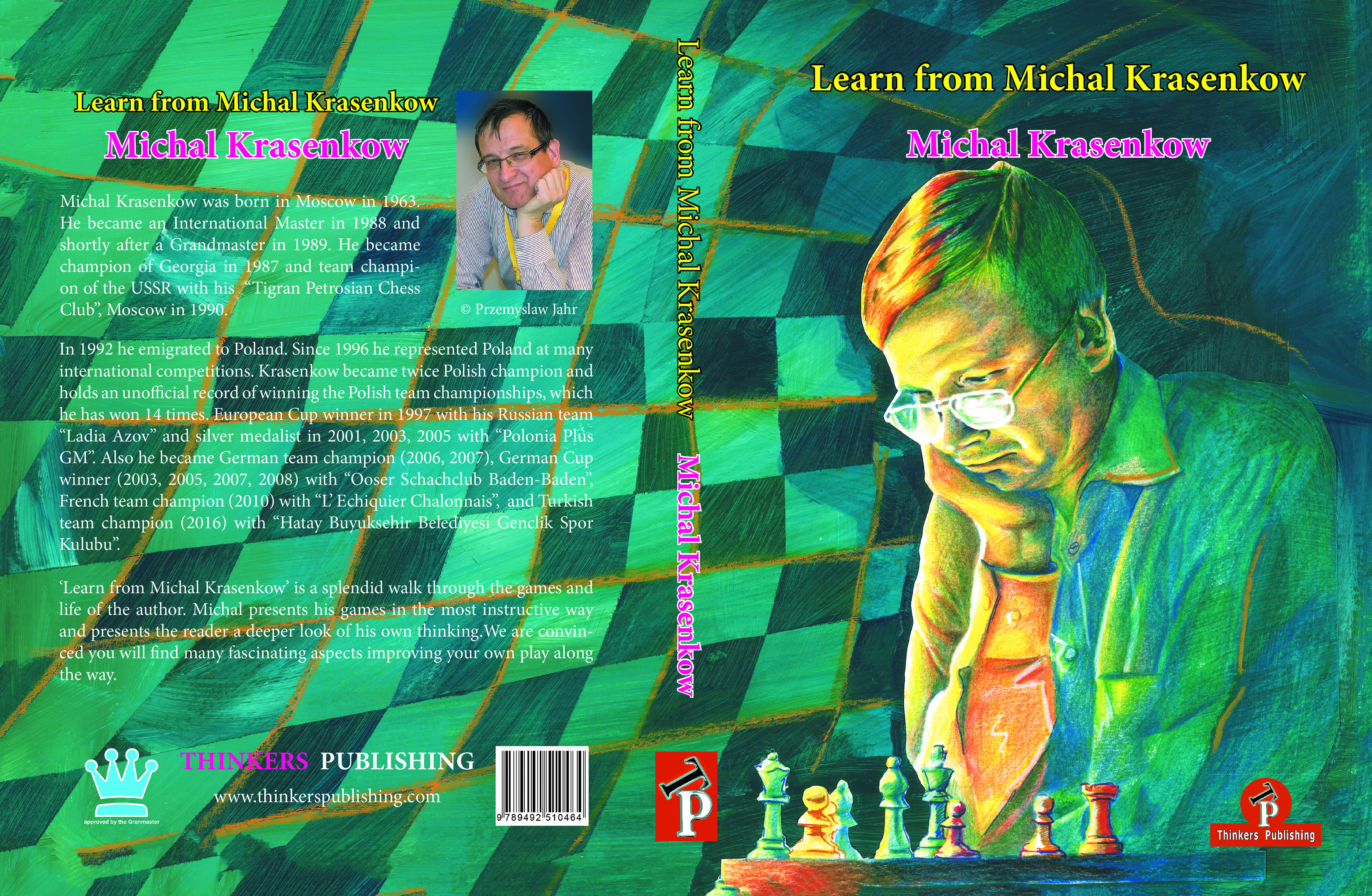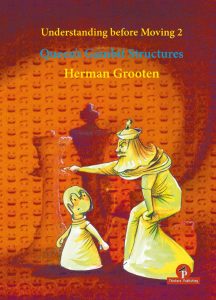
Herman Grooten is an International master, a professional coach for over thirty-five years and has taught players such as Loek van Wely, Jan Werle and Benjamin Bok.

The is the author’s second volume in the Understanding Before Moving series previously having written Understanding before Moving 1 : Ruy Lopez – Italian Structures
As with every recent Thinkers Publishing publication high quality paper is used and the printing is clear. The book can easily be laid flat next to the board and does not require weights to prevent it from “self-closing” (a particular bugbear of ours !). Each diagram is clear and the instructional text is typeset in two column format, which, we find, enables the reader to maintain their place easily. Figurine algebraic notation is used throughout and the diagrams are placed adjacent to the relevant text and each diagram has a “to move” indicator.
The main content is divided into eight chapters :
- Studying of Openings
- Background of Openings
- Pawn Structures and Practical Examples
- Discussing the Variations
- Model Games
- Exercises
- Solutions
- Instructive Games
followed by a collection of 44 unannotated instructive games. There is no index but there is a liberal sprinkling of black & white photographs throughout the instructional text.
The books kicks off by providing the motivation to the reader of the purpose of taking on-board the approach that Grooten adopts. It is clear that he strongly believes studying the typical pawn structures that result from the variations of the Queen’s Gambit the student will gain greater understanding of the correct plans based on those structures. He goes to some trouble to warn students of the modern lazy tendency (younger players take careful note!) to read too much into assessments from modern engines (especially in the opening and transition to the middle game). He, quite correctly, wants the students to use their own eyes and brain to discover ideas and typical themes rather attempting to memorize so-called best moves which change anyway when the engine version is updated.
The advice continues with tips on preparation before and during a tournament which are entirely pragmatic and help the students confidence going into games against both weaker, similar and stronger opponents.
Chapter 3 is where the heavy action starts. We focus on the Carlsbad pawn structure, arising from many variations of the Queen’s Gambit :
and the author details three main plans implied by the above structure followed by twelve high quality instructive examples of these plans from the world’s best players.
For example :
Plan C : Opposite-side castling, 3.10 Pawn Storms on both sides
Position after 12…Rc8In a position with opposite castling it’s of great importance to get one’s attack off the ground as soon as possible. It helps greatly if there is already some weakness in the enemy’s king position , and if it isn’t there – well, the first priority is to force its creation.
13.Ng5
For 13.g4 see the game Petrosian – Ilivitky, Moscow 1965.
13…b5?
In this case it was best to retreat to d7.
14.Be5!
Thus Timman forces Black to weaken himself.
The Pawn Structures chapter essentially provide the ethos of the book putting the student in the right frame of mind for the specific discussion of the variations of interest. As far as I can tell these variations are :
- The Tartakower Variation of the Queen’s Gambit Declined
- The Lasker Variation of the QGD
- The Tarrasch Variation (including the Hennig-Schara Gambit)
- The Noteboom (or Abrahams) Variation
- The Ragozin Variation
- The Cambridge Springs Variation
- The Exchange (Carlsbad) Variation
- The Rubinstein Variation
- The Vienna Variation
and all of these are treated via a 1.d4 d5 2.c4 e6 3.Nc3 move order.
Some of the above could (arguably if you enjoy this sort of thing!) be said to arise from a Semi-Slav Defence or even Triangle Variation move order (for example the Noteboom / Abrahams and Cambridge Springs variations) so there is more to this book than first meets the eye. The Vienna section is most welcome since it has not hitherto received much attention in the literature and can, of course, become sharp early on.
There is no coverage of the Queen’s Gambit Accepted (the Vienna Variation comes close of course) or of the lines (typically 5. Bf4) where White puts the c1 bishop on f4 rather than g5 : some (including myself) might dub this the Blackburne Variation. There is a brief treatment of the Alartortsev or Cahrousek Variation (3…Be7) included in the Carlsbad section.
For each of the above variations the author highlights the main ideas for white, and to give you some idea here is an example from the Ragozin section :
Position after 10…Kf8in the Interpolistoernooi in Tilburg in 1981 :
11.dxc5!!
Behind this lies a brilliant concept,
11…Nxc3 12.bxc3 Bxc3+ 13.Ke2 Bxa1 14.Qxa1 f6
It’s time to take stock of the position. White has sacrificed the exchange, but has obtained an abundance of compensation in various forms :
- Development and activity
- Bishop pair in an open position
- Unsafe Black king
- Better pawn structure
- Control over d6, which can be used as an outpost by several of White’s pieces
- A position in which “diagonals are more important than files”
All of this then prepares the reader for Chapter 5 : Model Games. There are 15 model games of which 7 cover the Carlsbad, 4 the Tartakower and then one each for the rest except for the Lasker and Vienna Variations.
The reader is then encouraged to test their understanding with 16 exercises of the “White to play and find the best continuation” type. Each of these exercises is analysed in detail in the Solutions chapter.
In summary, this book will be invaluable to any serious student of the Queen’s Gambit, particularly the Exchange Variation and Carlsbad structures. Any player who plays d4 but does not play a quick c4 follow-up (for example, the currently trendy London System followers) may well be sufficiently enthused to “upgrade” their Queen’s Pawn opening to a Queen’s Gambit. The emphasis on understanding via pawn structure analysis will help any student of chess even if do not play 1.d4. Highly recommended !
John Upham, Cove, Hampshire, 22nd August, 2019

Book Details :
- Hardcover : 238 pages
- Publisher: Thinkers Publishing; 1 edition (15 Feb. 2019)
- Language: English
- ISBN-10: 9492510421
- ISBN-13: 978-9492510426
- Product Dimensions: 17 x 1.5 x 23.4 cm
Official web site of Thinkers Publishing


